אירווינג נורמן(1906-1989)

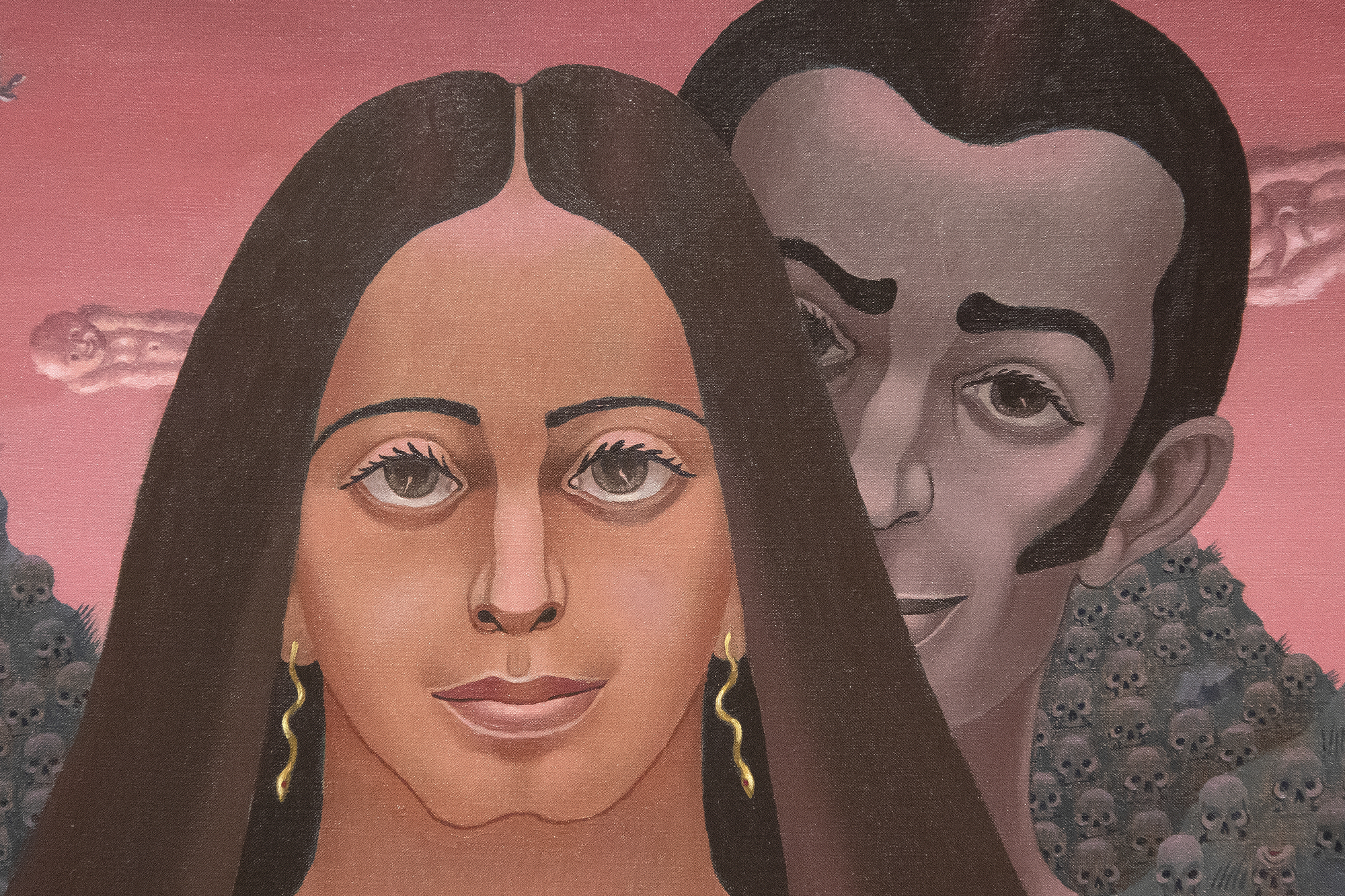
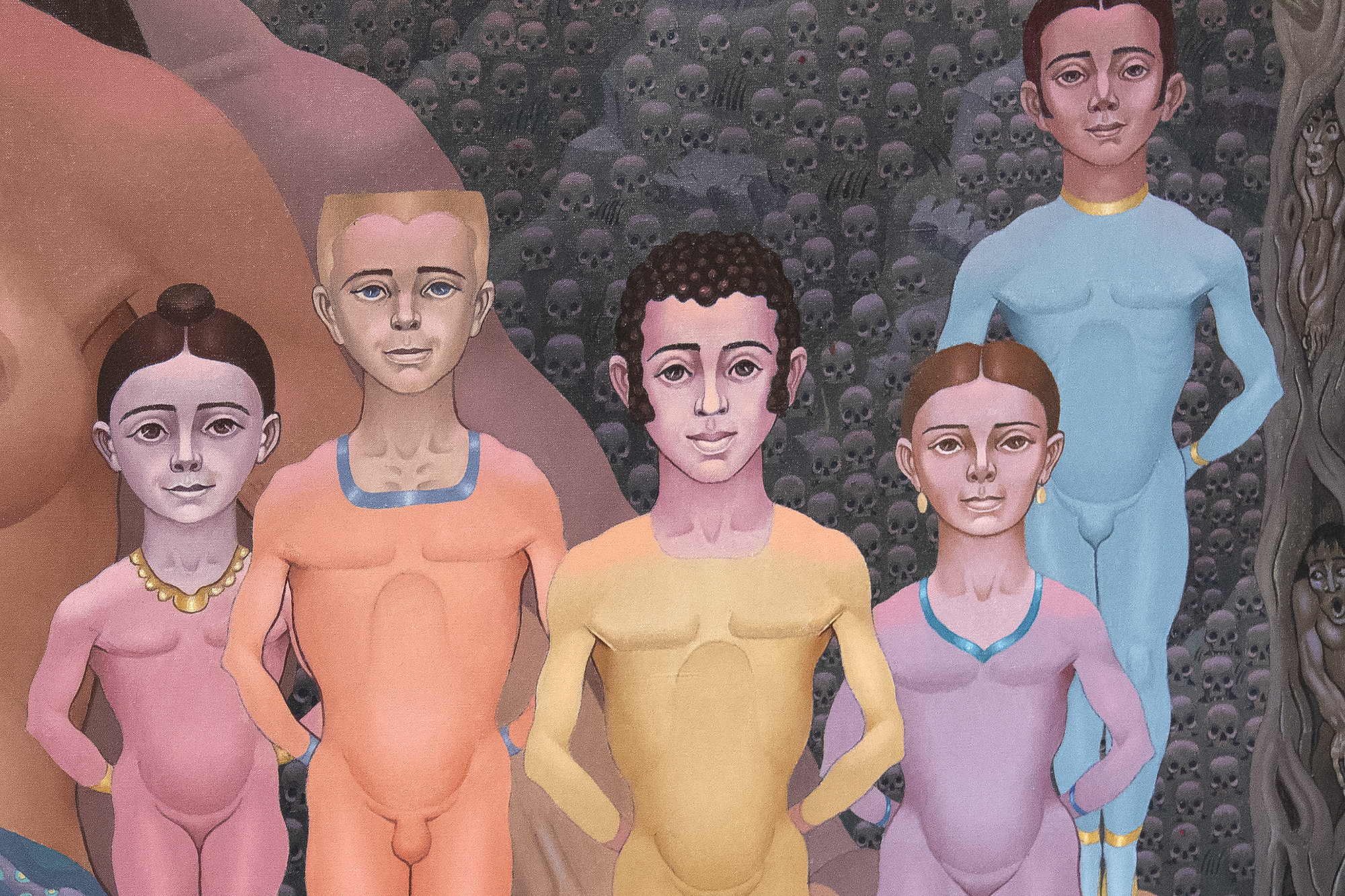
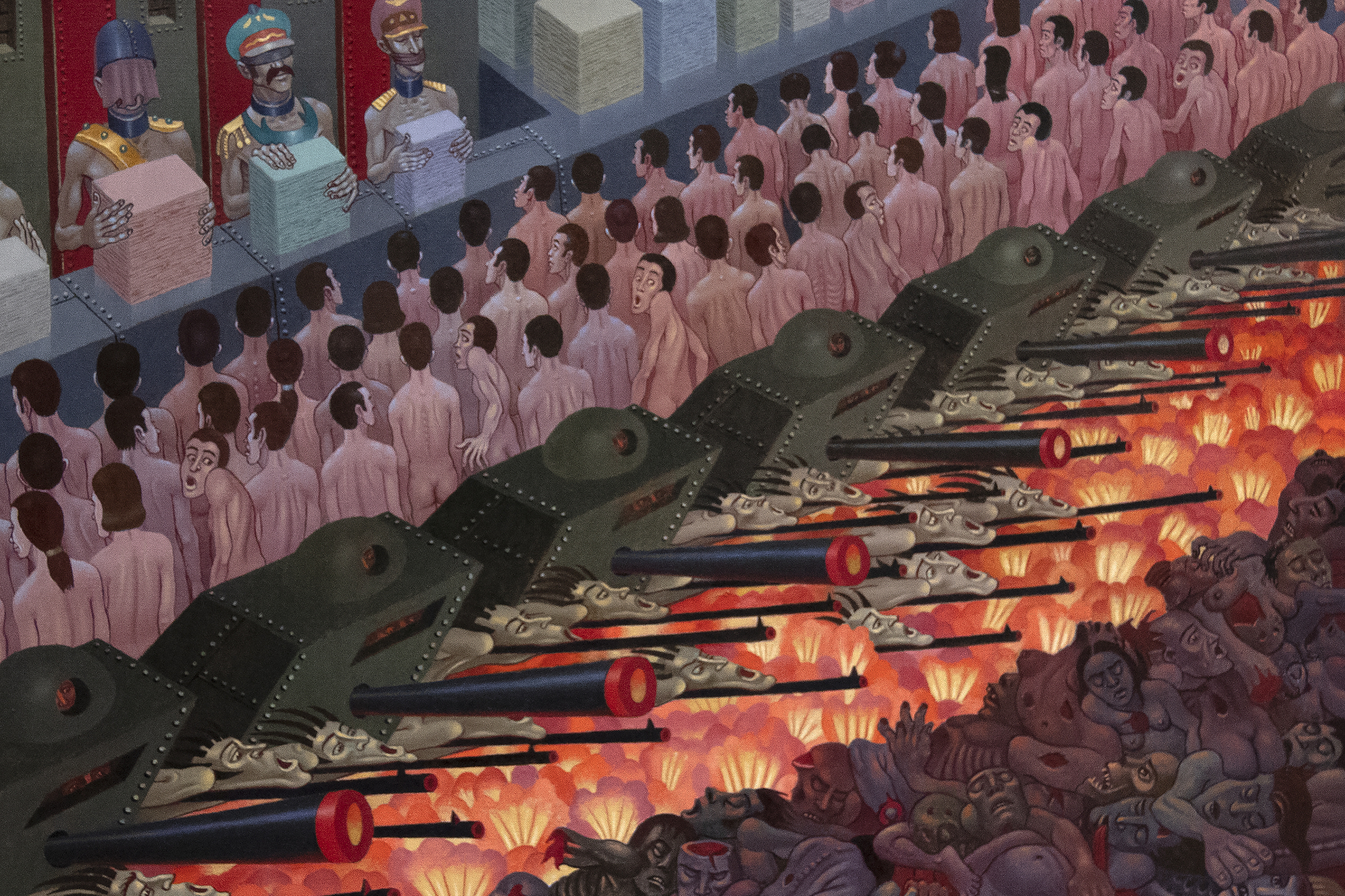
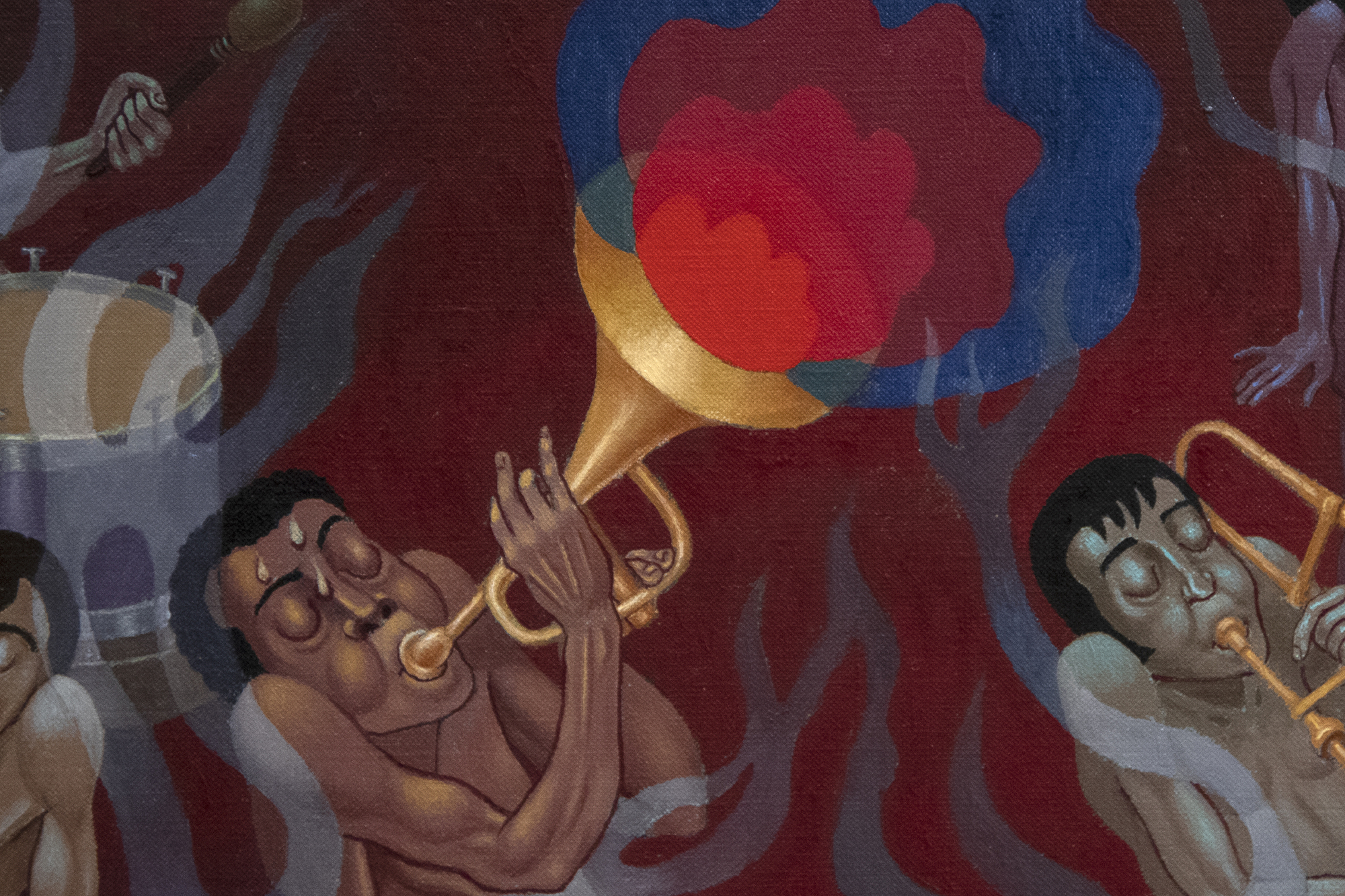

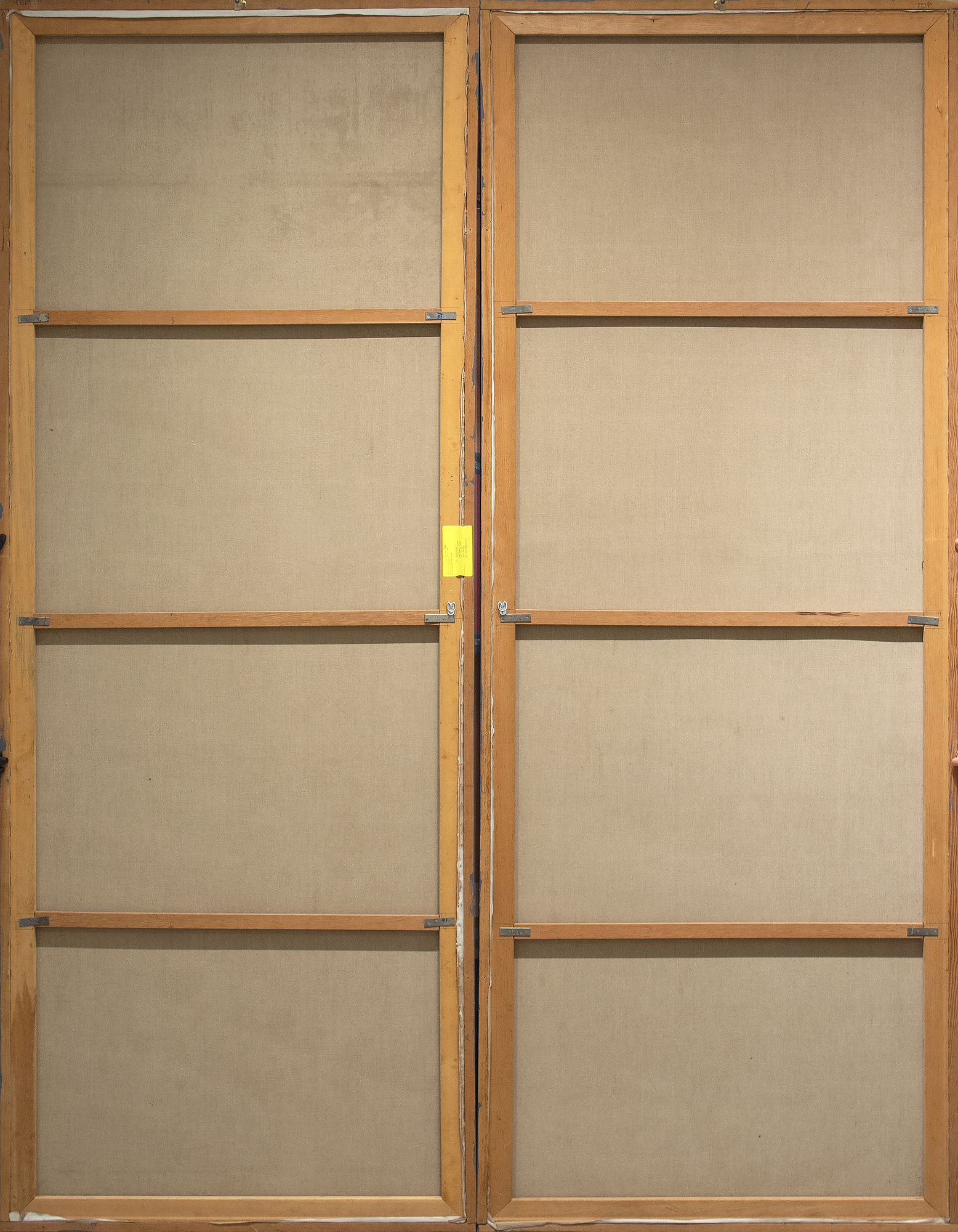
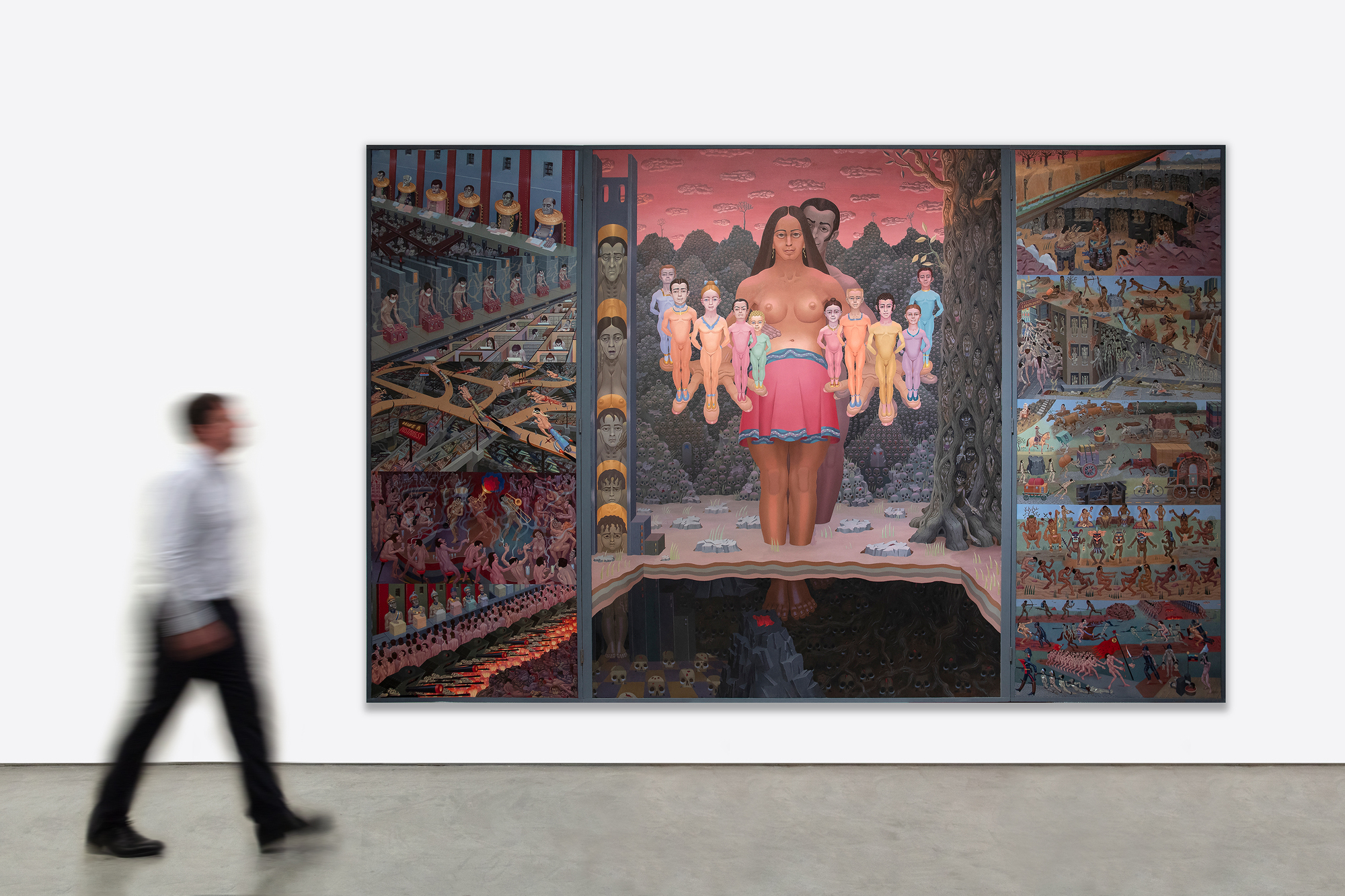
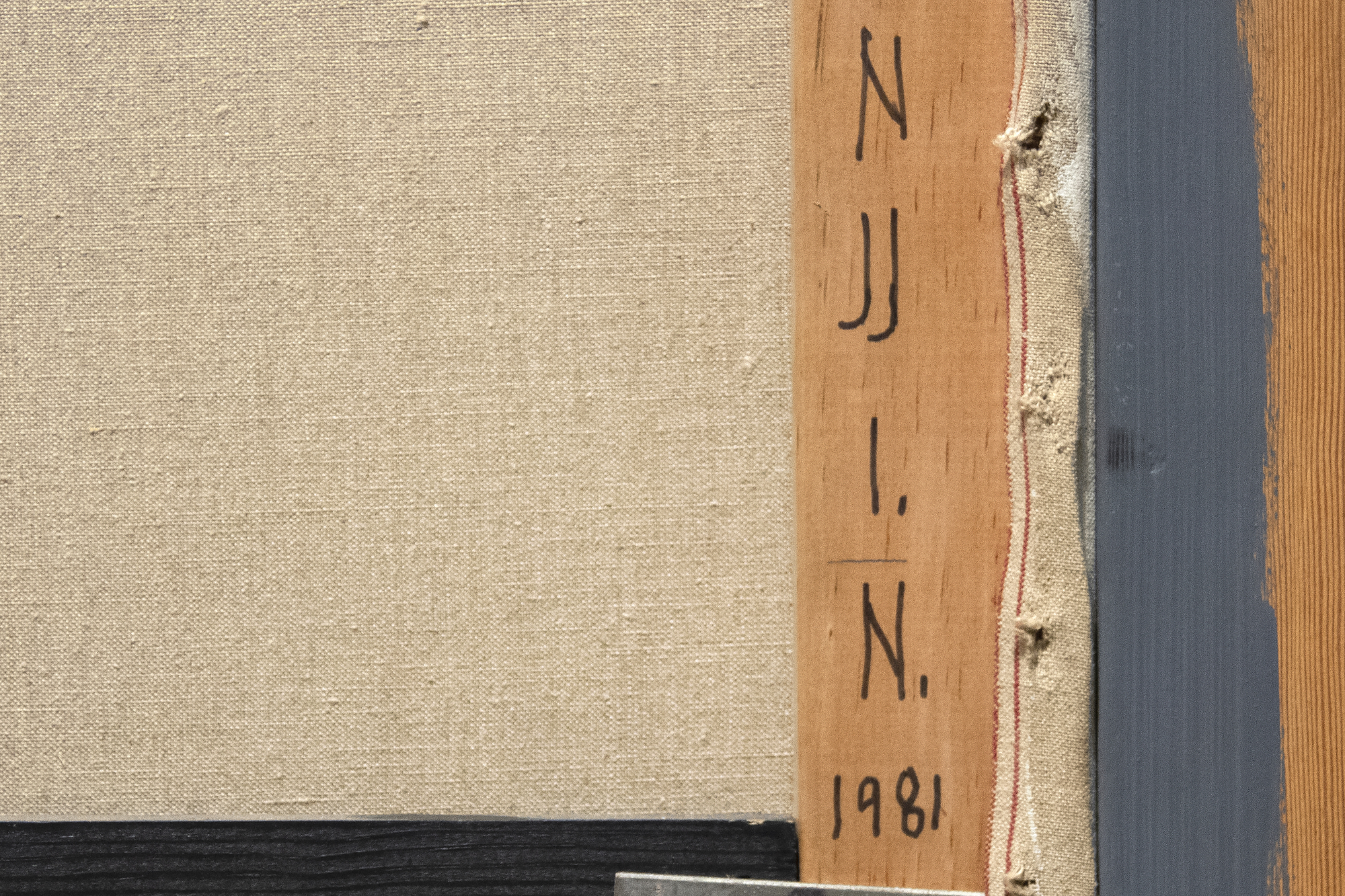

מקור ומקור
מוזיאון קרוקר לאמנות, סקרמנטואוסף פרטי
תערוכה
המוזיאון האלטרנטיבי 1986, ניו יורק2002 מכללת סנטה מוניקה
2006 מוזיאון קרוקר לאמנות, סקרמנטו
2007 מוזיאון פסדינה לאמנות קליפורניה
2007 מדינת יוטה Univ. נורה אקלס הריסון מוזיאון לאמנות
2007 מוזיאון קצן של האוניברסיטה האמריקאית, וושינגטון, ד.C.
ספרות
מטרופוליס האפלה: הסוריאליזם החברתי של אירווינג נורמן, אד סקוט א. שילדס וריי דיי (סקרמנטו וברקלי: המוזיאון לאמנות קרוקר וספרי היידיי, 2006), עמ' 199מחיר 1,250,000
דמויותיו של אירווינג נורמן, המופעלות על ידי הסביבה והמרחב הפיזי שלהן, הן בסגנון שמקצין את יכולת הגיבוש של הצורה האנושית כדי להדגיש את פגיעותן והכניעה שלהן. גמישות מילולית וסמלית זו מעידה על כך שדמויות אלו נמתחות, דחוסות או מפותלות על ידי כוחות סביבתן, תוך שימת דגש על חוסר האוטונומיה שלהן והמערכות המדכאות השולטות בקיומן. בעוד שהדמויות הללו משקפות פגיעות, הבחירה המבנית של נורמן ב"מצב האנושי" יוצרת סמיכות ברורה שמסיטה את תשומת הלב לכיוון הטבלה המרכזית. לדמות נשית מפקדת, המתנשאת מעל הכישלונות והזוועות הפוגעניות של העבר, מצטרף גבר, היוצר "זוג" סמלי, המצביע על האחדות והאחריות המשותפת של חזון חדש. ידיהם, מוגדלות ומופנות, מציגות את הילדים האלה כחזון המציע תקווה והתחדשות לעתיד. המחווה, בשילוב עם הדמות העתידנית, הכוחנית והמחזקת. נתיב - אנושיות בהירה יותר צופה פני עתיד הטבלה המרכזית פועלת כהצעה מטפורית, המזמינה את הצופה לשקול עתיד שלא נגע בכובד האפלה שממנו יוצאות דמויות אלו.
כאן, נורמן מדגיש חזון מלא תקווה, אם לא אופטימי, לדורות קדימה. ההחלטה המבנית מציעה שינוי מכוון במיקוד: הסצנות האפלות יותר שנדחקו לצדדים מייצגות את הנטל, בעבר ובהווה. יחד עם זאת, הדמויות המרכזיות מגלמות את הפוטנציאל לעתיד המעוצב בחוסן והתחדשות. מיקום זה מייחד את המצב האנושי כהשתקפות של שנותיו המאוחרות של נורמן, שבהן מתעוררת תקווה מתונה לתבוע את הקרקע הגבוהה על מעוררי המלחמה, השחיתות העגומה, חיפושי התענוגות המטורפים וההשפעות הבלתי אנושיות של החברה המודרנית.
לאורך הקריירה הארוכה שלו, נורמן עמד זקוף בהרשעותיו; הוא הסתובב, פנה אל הבדים הגדולים והריקים, ועיצב וצייר סצנות מורכבות ומאוכלסות בצפיפות. באשר להכרה, הוא ניצל את המצב - תהילה או עושר סיכנו את האופי הבלתי מזוהם של מסע החיפוש של אמן. בסופו של דבר, המצב האנושי הוא סיכום של חייו ויצירתו של נורמן וקריאה לפעולה, הדוחק בנו לבחון את שותפותנו למערכות שהוא תיאר בצורה כה חיה. באמצעות אומנות מוקפדת ועוצמה אלגורית, זוהי יצירת מופת ראויה למוזיאון שממשיכה להדהד, הנושאים שלה רלוונטיים כיום כפי שהיו כאשר נורמן הביא את חזונו בעמל רב.


